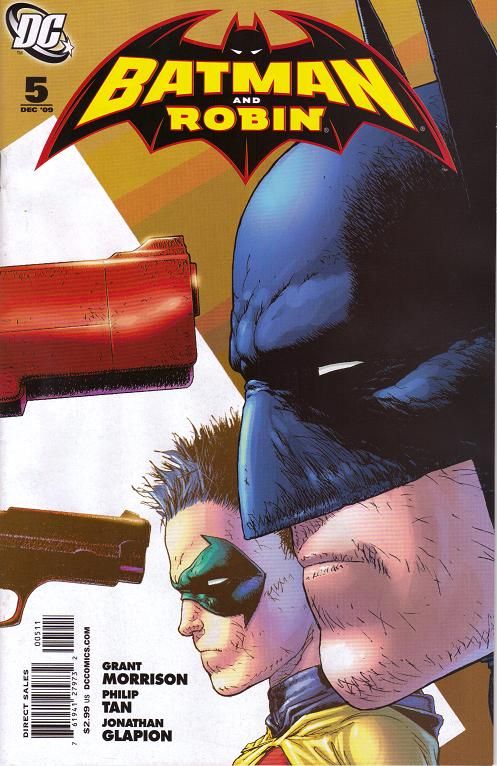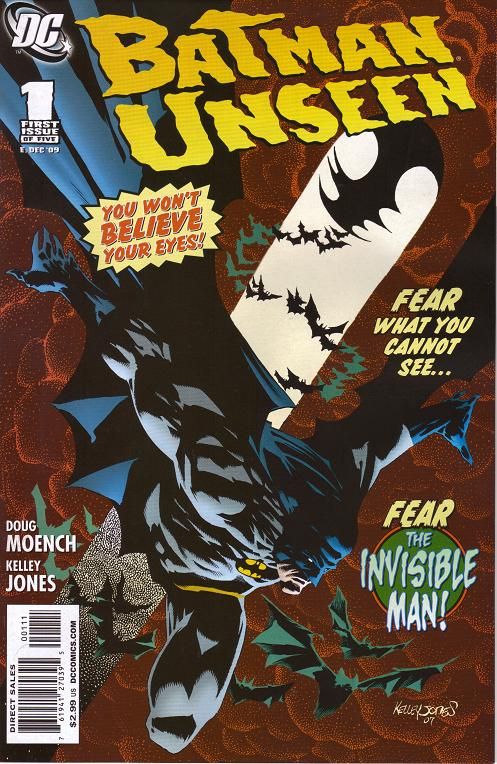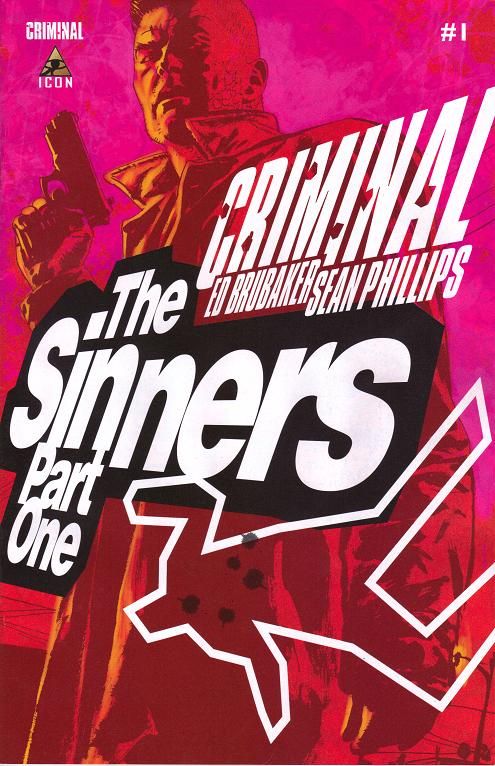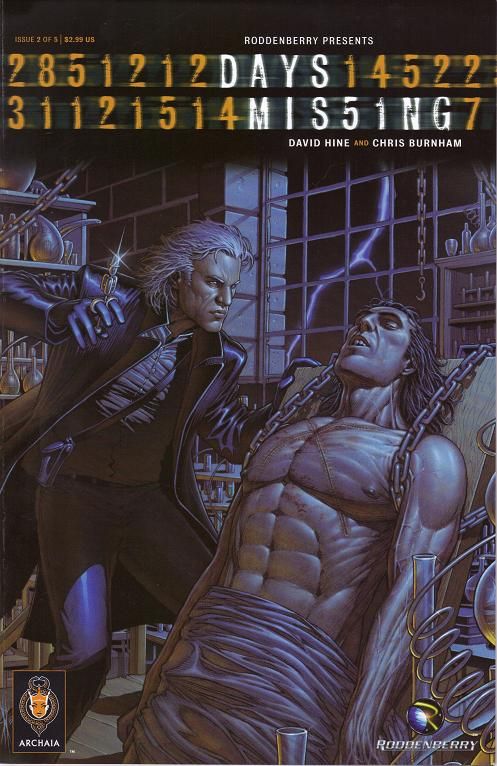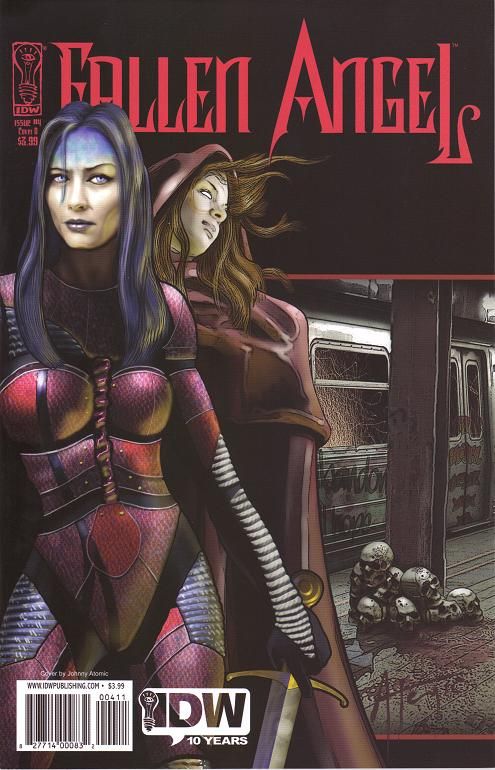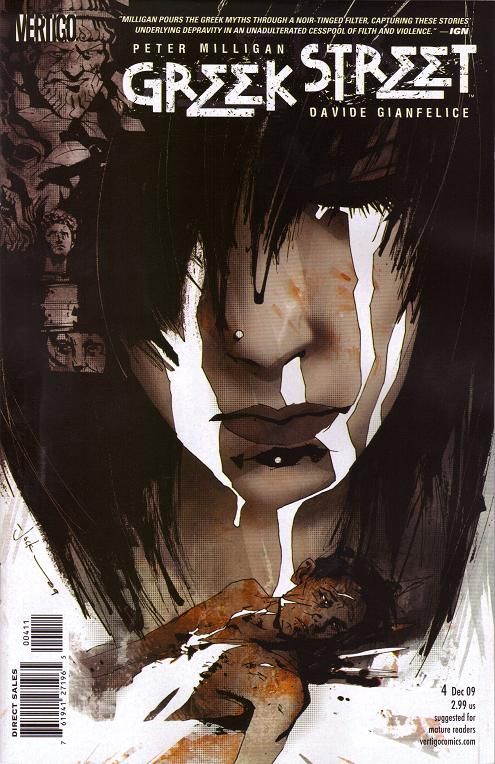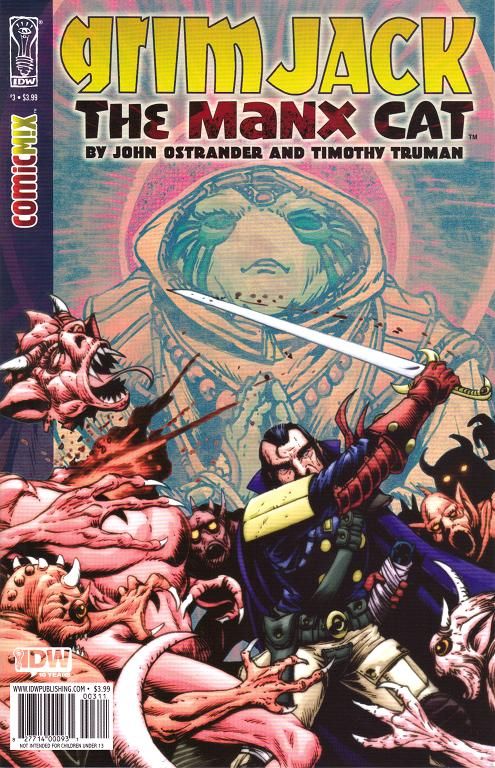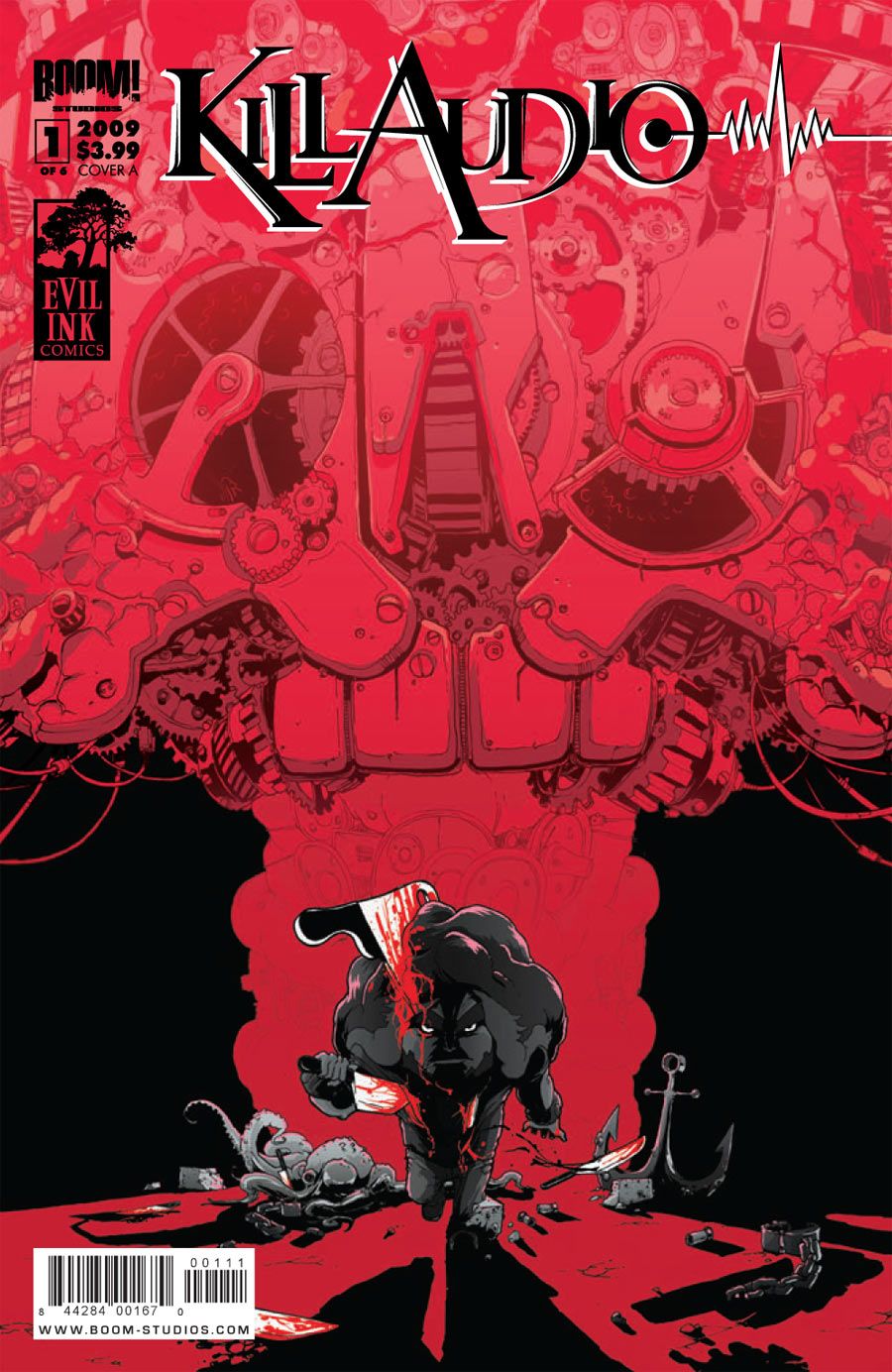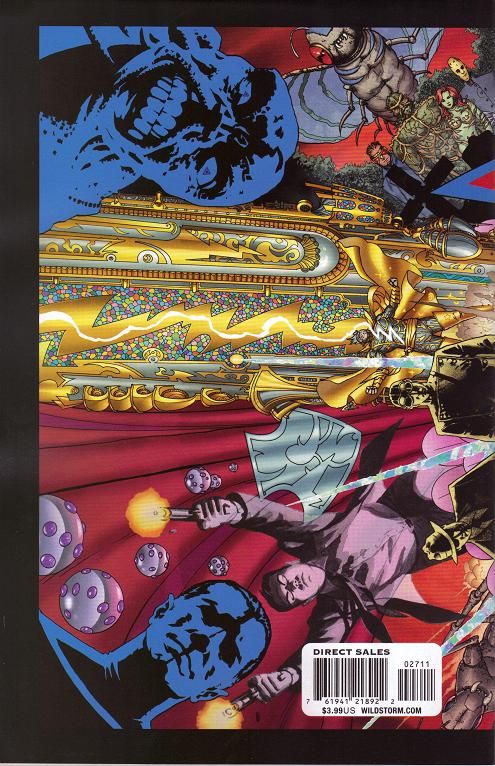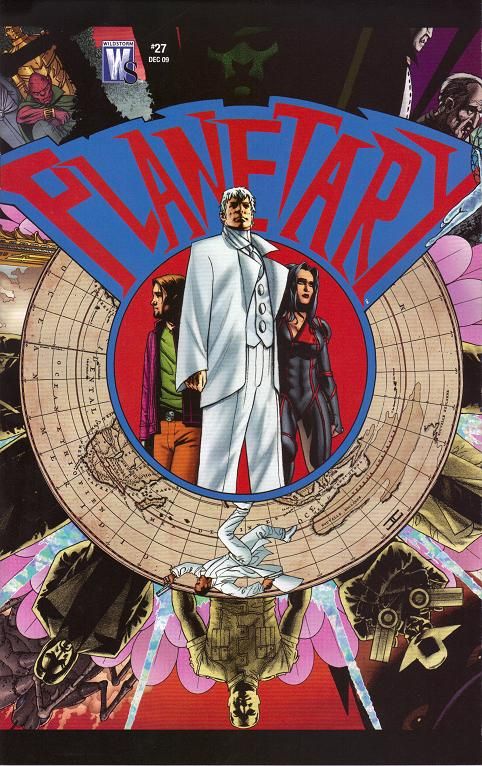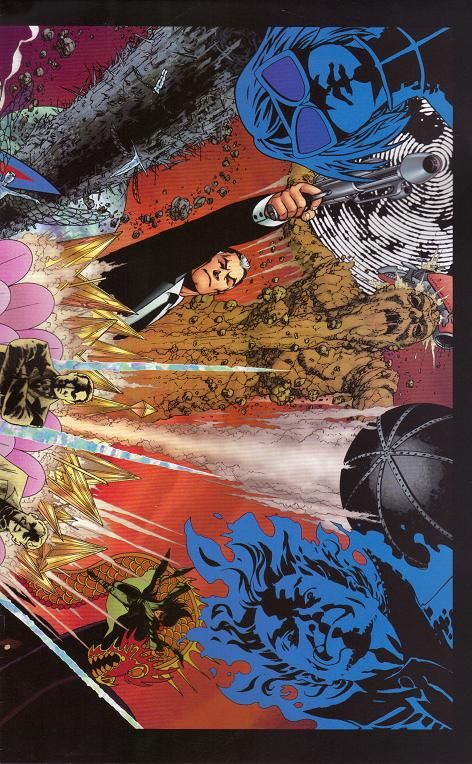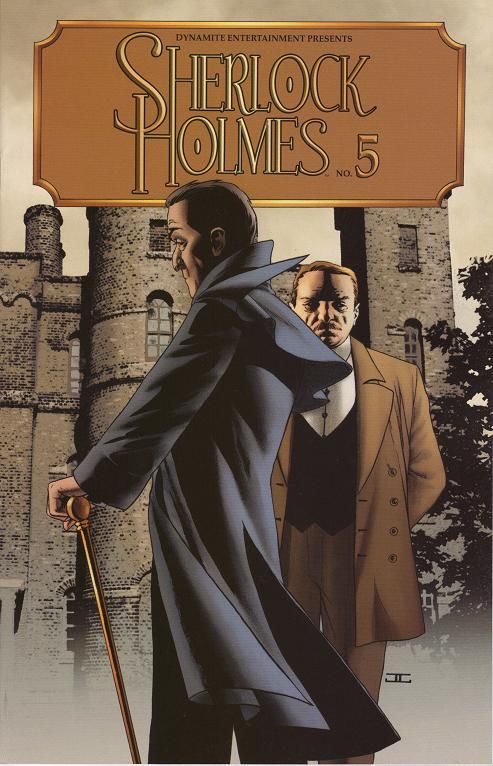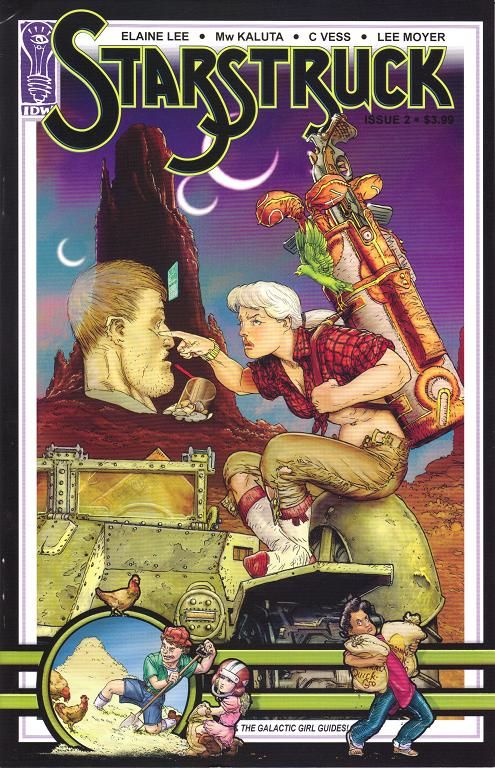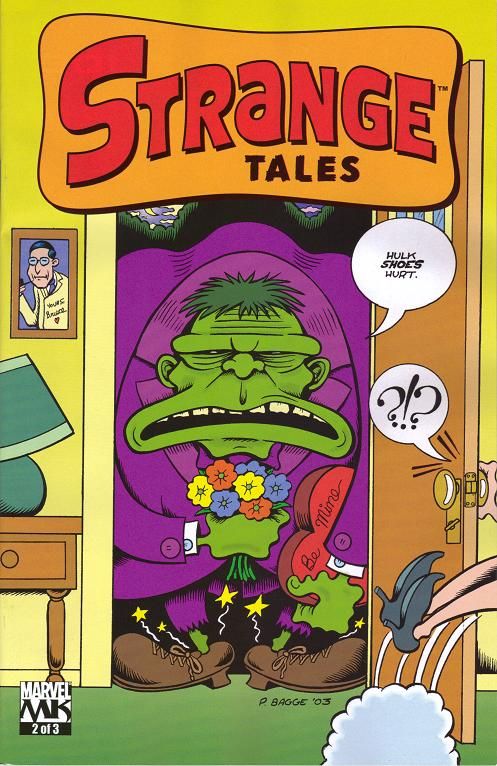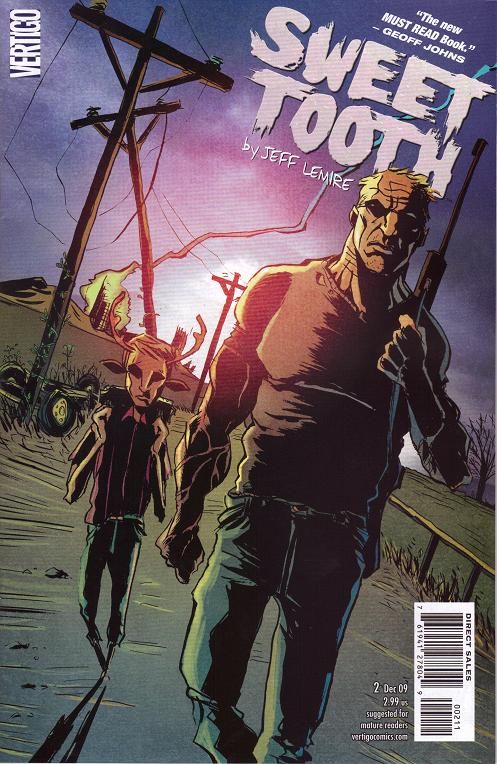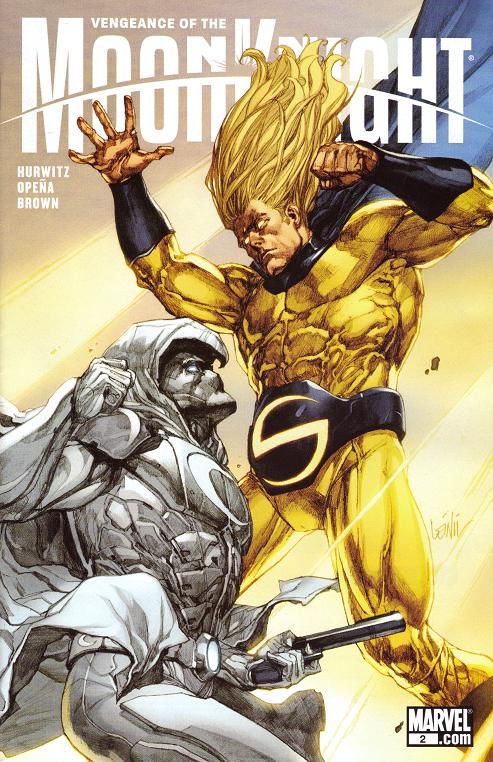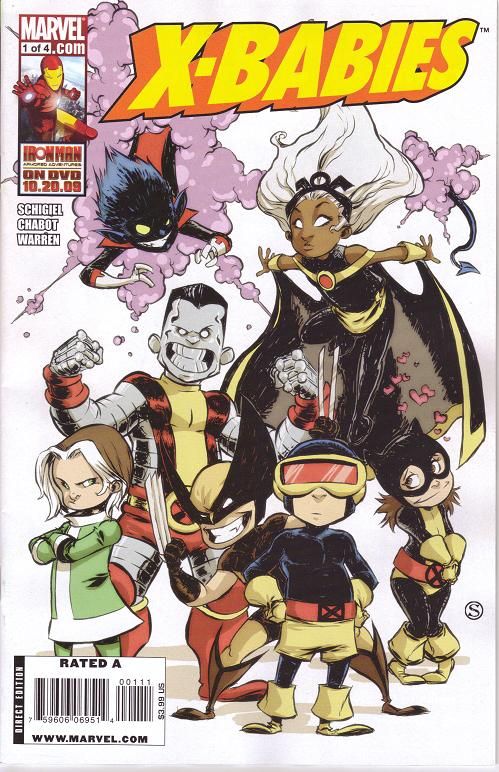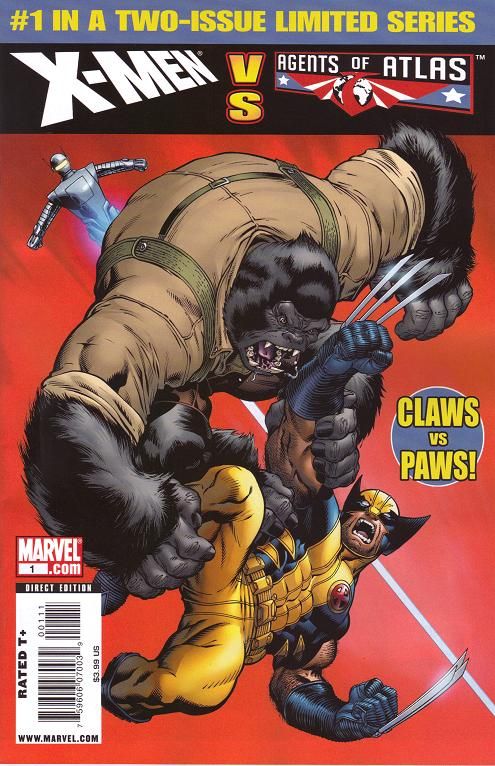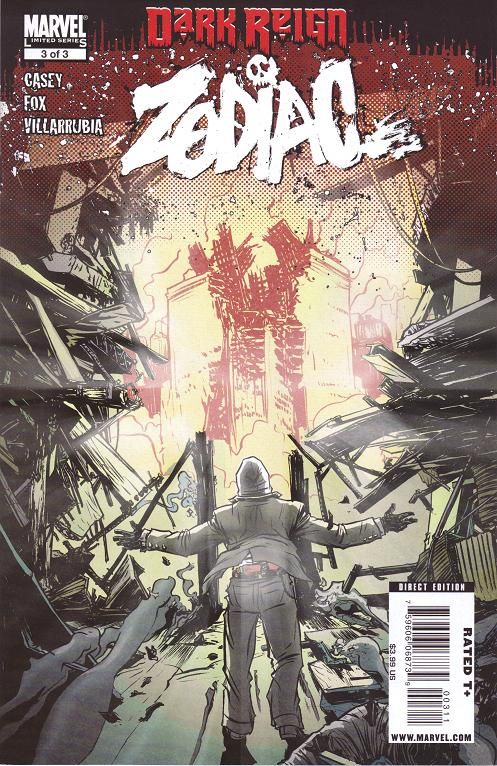"I'm not a hero! I'm not a savior! Forget what you know!"
All right, no shenangians this week. You will definitely not feel like the money you spent to read this has been wasted!
Batman and Robin #5 ("Revenge of the Red Hood Part Two: Scarlet") by Grant "What other mild-mannered animal can I turn into a scary character name?" Morrison (writer), Philip Tan (penciller), Jonathan Glapion (inker), Alex Sinclair (colorist), and Patrick Brosseau (letterer). $2.99, 22 pgs, FC, DC.
Well, all the slack I gave Philip Tan last issue dissipates a bit in this issue, as we get a panel that is supposed to show the Penguin bouncing off the roof of a car but is almost incomprehensible, a two-panel shot of the Red Hood grabbing Robin and smashing his face down that makes me pine for a Quitely rendition of the exact same scene, as I still can't figure out the choreography in the scene, and some other really odd perspectives. On the whole, however, it's still not as painful to look at as something like Haunt, so I guess that's something.
I'm still not willing to let the God of All Comics off the hook, however. G-Mozz, I assume, wrote that Penguin gets chucked out the window. How, pray tell, is Oswald supposed to get to the ground? Did Morrison figure that out? Did he write, "Chuck Cobblepot out of the window and make sure he doesn't die" or was he more specific? The Penguin falls a tremendous distance and has no visible problems with broken bones or head injuries, after all. Do we blame Tan for that? Similarly, I understand that this is part of the greater Bat-universe and that the Mozzer doesn't necessarily have to clue us in on what's happening, but I do wish he would make it more clear that someone is impersonating Bruce Wayne (right? isn't that Hush guy pretending to be Bruce right now? gee, that's dumb). And even though Morrison rejects the grand retcon that is "Crisis on Infinite Earths," as far as I know, the Jason Todd who dyed his hair never existed. Right? Or did I miss something? Finally, as cool as the Flamingo is, I still can't get over the fact that this plot - "heroes" killing villains because the real heroes won't - is tired. It's interesting reading Morrison's dialogue, because he thinks of neat things (like Jason getting zits because of the helmet), but this is a boring comic redeemed by two things: Morrison's skill with making the characters interesting, and the fact that we know it ties into a bigger plot, which we pray will be better than this minor one. The way this book ends, it appears the final issue of Tan's arc might be something pretty cool, but let's not dump on Tan completely if you don't like this issue. Some of the blame must go to the Messiah, you know. As I usually do, I will trust Morrison to make sense of it all, but that doesn't change the fact that these two issues haven't been his greatest.
Batman: Unseen #1 (of 5) (Part One: Meat-Man") by Doug Moench (writer), Kelley Jones (artist), Michelle Madsen (colorist), and Pat Brosseau (letterer). $2.99, 22 pgs, FC, DC.
Now, I'm sure people will call me crazy (go ahead, I can handle it), but Batman: Unseen, even with Moench returning once again to his favorite villain, Black Mask, is a superior comic than Batman and Robin #5. Moench tells a story of a disgraced scientist who ends up working (without knowing it) for Black Mask, and his formula gradually turns him invisible and, well, insane. Batman gets involved because at one point, the semi-invisible man heads out for grub and things turn lethal. So while the first issue is mostly set-up, it still hums with energy, and Moench and Jones have such a wonderful synergy which makes this just zip along. It's totally ridiculous and pulpy, and Moench makes the scientist say such things as "I am the almighty face of biological shock and awe!", but what's great about a Moench/Jones Batman book is that a statement like that doesn't sound stupid, just bombastic. Moench's Batman villains talk like that because Moench understands that they're not supposed to be realistic, they're supposed to be larger-than-life bad guys, and they are. In the same way, Jones is close to the perfect Batman artist (I would say Breyfogle is, but others are in the running, of course), in that he understands that a man dressed up as a bat is a bit silly, so he makes him almost inhuman (this is why his and Moench's VampBats books are so neat) and puts him in a wildly Gothic city, the kind of place that looks kind of neat to live in when you're not scared out of your wits. Jones's Batman is a terrifying creature, well suited for dealing with the freaks who live in his city.
I do have an inordinate fondness for the Moench/Jones Batman of the mid-1990s, so I'm always glad when they hook up to give us another story, but that doesn't change the fact that this is a gloriously pulpy comic in the best sense of the word. If you're not a fan of Moench and his pseudo-scientific rambling or Jones and his ever-growing Bat ears, this comic won't change your mind a bit. But if you are a fan, this will just make you smile. Now, if only DC would let Moench and Jones tell us what was up with that puppeteer dude!
(Kelley Jones drew that cover in 2007, as you can see by his signature. That's strange. Has this been on the shelf a long time, or did it take them a while to get their schedules together? Inquiring minds want to know!)
Criminal: The Sinners #1 by Ed Brubaker (writer), Sean Phillips (artist), and Val Staples (colorist). $3.50, 29 pgs, FC, Marvel/Icon.
Criminal returns, and because this world makes no sense, a better comic than Incognito by the exact same creative team will automatically lose readers. Up next: goats with two heads will be born! Planetary will conclude! Glenn Beck will be a conservative voice of reason! It's topsy-turvy!
Not surprisingly, it's a very good issue. Tracy Lawless, who has become the nominal star of Criminal, returns, this time fulfilling his "contract" with Sebastian Hyde. He's knocking people off, but he's a lousy enforcer, as he always makes sure the guy really deserves it, which makes Hyde grumpy. Hyde, however, has a new job for Tracy - someone is killing "connected" people in his town, and Hyde wants Tracy to find out who it is. Off he goes!
We find out soon who the killers are (yes, plural), but not why they're doing what they're doing (although we can make some educated guesses). Tracy, meanwhile, is not exactly screwing Hyde's wife, just spending time with her, which will still probably get him killed if Hyde finds out about it. And, because Tracy's life isn't crappy enough, some dude rolls into town looking for a "deserter" - yes, Tracy. Oh dear.
As always, Brubaker doesn't re-invent the wheel in this book, but he and Phillips have done such a wonderful job creating this world that whenever they return to it, we just slip into it easily and go along for the ride. Tracy just moves through the plot, learning information, doing the best that he can, trying to get through another day. It's not surprising that Brubillips keeps coming back to him - he's a good character, and the situations he gets into challenge him to remain a decent guy. It's always fun to watch Tracy try to navigate this morally murky world in which he lives.
I don't know if you're one of those people who bought Incognito but won't buy Criminal, but don't be that person. That person probably thinks that Modern Family is much, much better than Arrested Development. You don't want to be that person, do you?
Days Missing #2 (of 5) ("September 12th, 1815") by David Hine (writer), Chris Burnham (artist), Imaginary Friends Studio (colorist), and Troy Peteri (letterer). $2.99, 22 pgs, FC, Archaia/Roddenberry Productions.
This unusual series, in which different creative teams are featured in every issue but the theme is the same - a weird dude erases days from human history that would have completely changed humanity for the worse - continues with the weird dude intervening to stop a scientist from re-animating the dead. He does so, but his experiment remains in the dreams of Mary Godwin (who witnesses the resurrection) and she comes up with her famous monster story. It's a decent issue, and David Hine is the kind of writer who can craft a good horror story. Burnham, who is usually quite good, suffers a bit from the poor coloring, which softens his pencils a bit too much. When John Galton resurrects a dead guy, we can see that Burnham is a good artist, because those scenes are full of power and terror. But the coloring job washes the sharpness out of his lines and makes it less distinctive than it might be otherwise.
I am a bit puzzled by the idea of the series, a problem I hope will be cleared up as we move along. The weird dude (who is known only as the Steward) can fold days away so that they never existed. Is this a last resort? Because it seems like that would be easy to do, but he tries to stop the resurrection by more conventional methods before he "folds" the day and erases it. I don't think it was addressed in issue #1 (although I could be wrong), and it's not addressed here. I know that he doesn't erase the days at the beginning of the issue because, well, then, the issue would be over, but is this a case of what Chad was ranting about a few days ago, where it's simply to heighten the drama? Beats me.
If we can get past that little annoyance, this is a pretty good comic. It's not great, but it's interesting. And the creative teams are pretty keen (next month: Ian Edginton and Lee Moder!). We'll see how they continue to explore the Steward's intervention in human affairs.
Fallen Angel: Reborn #4 (of 4) by Peter David (writer), J. K. Woodward (artist/colorist), and Neil Uyetake (letterer). $3.99, 22 pgs, FC, IDW.
I thought this was a five-issue mini-series, but I guess it's not. IDW never lists how long a series lasts or even, at the end of this issue, gives us a "the end" or a "to be continued," but nothing past this issue has been solicited, so I guess it's over. I write this because it ends ambiguously. The main story appears to wrap up, but then, in true Peter David fashion, there's one of those endings that sets up a sequel. I wasn't clear why David ended the regular series, but I guess he's going for a "series of mini-series" kind of thing that all the kids dig these days. That's fine. Unless he's doing something different. Who knows what lurks in the mind of Peter David????
Anyway, it's a typically keen issue of Fallen Angel, as Illyria is confronted with what she's become, Lee effects her typical obnoxious attitude, and there's a tough ethical dilemma to be solved. I don't mean to belittle it, because, much like Brubaker and Phillips on Criminal, David knows exactly what he's doing, and it's always a pleasure to see him write a nifty 22-page comic. And Illyria's real form? Icky.
I don't know what's next for Fallen Angel, but I'll be there!
Greek Street #4 (Book One: Blood Calls For Blood Part Four: The Monster and the Labyrinth") by Peter Milligan (writer), Davide Gianfelice (artist), Patricia Mulvihill (colorist), and Clem Robins (letterer). $2.99, 22 pgs, FC, DC/Vertigo.
More of the same with this series, which I just can't get a handle on. Milligan gives us some creepy scenes (scary naked lady leaping out of the bushes? gold!) and moves things forward, but it's still very scattershot, and it's becoming increasingly clear that, even if I want to read the series, it would be better in trade format. Milligan seems to be ignoring the 22-page format, which is fine, because I do appreciate the grand scale of this comic, but it makes each discrete chapter a bit of a mess. It's the dilemma faced by every comic writer who wants to work with a large, unknown cast: Do you do what Milligan is doing, juggling several characters and their arcs and hope that people can keep up, or do you focus on one character for a few issues, then go back and focus on another character, and then another, until you return to the first character and hope people remember what the hell happened? I think the way Milligan is going is a better one, but it's not perfect, and it's nice that he seems to be bringing the plot threads together a bit more and also that we've gotten a little bit of a handle on the characters so we can keep up with them. Of course, I might just be an idiot, and had to go four issues before I started figuring out who was who.
The first arc comes to a close next issue, and one nice thing about this series is that I have absolutely no idea where Milligan is going with it. I mean, Eddie is back in a similar situation that he was in the first issue, and I wouldn't be surprised if Milligan twists it back to his feelings about what happened with his mother, but I have no idea. It's vexing, because I also have no idea if I'm going to keep buying this. We'll see.
GrimJack: The Manx Cat #3 (of 6) by John Ostrander (writer), Timothy Truman (artist), Lovern Kindzierski (colorist), and John Workman (letterer). $3.99, 28 pgs, FC, IDW.
Here's another series about which I just don't have a lot to say, because it's so enjoyable. It's Ostrander and Truman doing GrimJack, after all. They give us action, bloodshed, some answers about the Manx Cat, a horribly creepy strip club, and a promise that we will find out the whole truth about the cat. It's exciting, adventurous, and looks great. If you're waiting for the trade, I can't blame you, but it's so much darned fun reading the installments that I'm not switching. And Mike Gold plugs Comix4Sight, the web site at which you can bid for things to raise money for Ostrander, who's dealing with glaucoma. If you're interested.
Kill Audio #1 (of 6) by Claudio Sanchez (writer), Chondra Echert (writer), and Mr. Sheldon (artist/letterer - link probably NSFW). $3.99, 34 pgs, FC, Boom! Studios.
Chip Mosher, grand poobah of marketing at Boom!, sends us .pdf files of pretty much everything the company releases. Occasionally Other Greg reviews them, occasionally Brad reviews them, and occasionally I review them. I usually don't because everything I'm really interested in that Boom! publishes I just get in the real world. But it's swell of Mr. Mosher to fire these off to us, because Boom! is doing a good job, I think, of getting their name out there and trying to make a dent in the market. I was going to skip this because it didn't seem like something I'd be interested in, but Chip is really pushing it, so I figured I'd give it a look.
It's not the greatest comic in the world, but it does have a lot going for it. First of all, the art is phenomenal. Sheldon has a wonderfully surreal take on the world, with a lot of very bizarre characters and "camera angles," for lack of a better term. He challenges you to really look at each panel - that's not to say that it's difficult to figure out what's going on in them, but because his point of view is so twisted, you often have to re-orient yourself when you're looking at the art. Some people might find this annoying, but for me, at least, it really wasn't. Once you're looking at each panel differently, everything becomes clear (unlike, say, Tan's art in the latest issue of Batman and Robin, where you can look and look and still not figure out exactly what's going on ... and I don't mean to pick on Tan, but they both came out this week, so his art was on the brain). His characters are detailed and insane, from the drugged-out rooster to the clockwork wizard. Visually, this issue is a treat.
Story-wise, the comic doesn't work quite as well, although there's a lot of potential. Kill Audio, a rather short immortal being, is pursued by a weird creature who attempts to kill him. After one such attempt, the creature tells him he might need to find his purpose in life. So he heads off to see the wizard, literally, collecting three other characters along the way. If this sounds vaguely familiar, it should, as Sanchez and Echert even make a reference to a "yellow brick road." It's also reminiscent of innumerable heroes' journeys into the underworld, from Orpheus to Dante. That's perfectly fine, especially because the series, as a whole, is about what happens after Kill Audio finds the wizard and learns his purpose, but it's odd that they would make it so obvious. Once Kill Audio finds the wizard, he learns his purpose - something about saving music. Again, this is fine, but because Sanchez and Echert have been dropping musical references into the text, it makes me think that this is going to be something about how cool some people are because they listen to obscure music and how lame others are because they listen to Celine Dion (to be fair, the characters enjoy some old-school Whitney Houston at one point, so there's that). I'm certainly willing to be proven wrong in that regard, but it's nagging me, especially because the characters all talk like they're in a movie and everyone's acting too cool for school. Overall, the story only gets going a little bit in this issue, and the characters remain ciphers, but the issue itself is packed with energy (both in the writing and the art), which goes a long way.
I'm kind of on the fence about Kill Audio. It's wonderful to look at and has a somewhat intriguing premise, but I worry that the writers will be unable to pull it off without being snarky, based on the way they write the characters in this issue. It's a delicate balance, and as I have no idea how good (or bad) Sanchez and Echert are as writers, I can't say with confidence they'll be able to. But it's certainly an unusual book, and in a comics world of sameness, that goes a long way.
Planetary #27 (of 27) by Warren Ellis (writer), John Cassaday (artist), Laura Martin (colorist), and Comicraft (letterer). $3.99, 28 pgs, FC, DC/Wildstorm.
Hmmm. Is this some kind of book I should be interested in or something? I just don't get it.
Okay, I'm kidding. Planetary was my favorite comic of the week whenever it happened to come out, so of course I'm totally jazzed that Ellis and Cassaday finally bring it to a close. From the preview, I wasn't expecting the dazzling stories of the first few issues or the conspiracy of the later issues, mainly because Ellis wrapped all that up. What we get, instead, is a nifty rescue mission to get Ambrose Chase, who Elijah thinks is still alive. Of course, Ellis uses this to indulge in some of his wacky pseudo-science that he enjoys (this time it's time travel), bringing up a point that, interestingly enough, I read in the Penn State alumni magazine this summer. It seems that there's a professor at my alma mater who is trying to build a time machine. He wants to go back in time and save his father, who died of, I believe, heart failure 40 years ago. Of course, it's been pointed out to him that you can't travel back further in time than when the time machine was first built, which kind of bummed him out. But he's undaunted! Anyway, Ellis uses this to great effect, as The Drummer points out that if they build a time machine, all their future selves will show up at that moment in time, because why the hell not? Because I am dull, I don't know why this is such a big deal, but whatever. The point is that Cassaday draws the hell out of this, and Ellis makes it clear that even though the series is ending and the Four have been defeated, it's still a weird world, and the Planetary bunch will continue to explore it. And strangely enough for fictional characters who don't actually exist, that's comforting. Ellis and Cassaday have done such a great job with this series that I like to imagine Elijah, Jakita, and The Drummer out there doing their thing, discovering all the weirdness in the world that losers like me, sitting on my couch watching the Phillies blow home-field advantage and eating potato chips, will never even conceive of.
Dang, I love Planetary. I can't wait to re-read it.
Sherlock Holmes #5 (of 5) ("The Trial of Sherlock Holmes Part Five: Endgame") by Leah Moore and John Reppion (writers), Aaron Campbell (artist), Tony Aviña (colorist), and Simon Bowland (letterer). $3.50, 22 pgs, FC, Dynamite Entertainment.
You know what's annoying about Sherlock Holmes? It's almost exactly like an Arthur Conan Doyle story. Why is that annoying? Well, Conan Doyle often wrote stories in which the real mystery was not what we thought, and it kind of comes out of nowhere. That's what happens in this issue, although Moore and Reppion have been leading us down that path too, so it doesn't come completely out of nowhere. The resolution to the murder of Sir Samuel Henry is clever enough, but it leads to new revelations that, because I don't want to spoil anything, I can't discuss. Suffice it to say that this is a nifty enough puzzle of a comic, but the ending kind of subverts everything by showing what's really going on. And what's really going on in kind of annoying, even if it's certainly in the spirit of Conan Doyle's stories.
Man, I hate not being more specific. If you're thinking about getting this trade, I'll just warn you: It's well written, nicely illustrated, somewhat nifty in the way Moore and Reppion build this mystery up and the way they explain it, and kind of frustrating at the end. How's that?
Starstruck #2 (of 13) by Elaine Lee (writer), Michael Wm. Kaluta (artist), Charles Vess (inker), Lee Moyer (painter), Todd Klein (letterer), and John Workman (letterer). $3.99, 25 pgs, FC, IDW.
Yet another book that's kind of difficult to review, because it's an old comic that's getting a new look, so if you really want to know what's going on, you can probably Google it and find out. It's another one of these things where it's so obvious a large-scale story that it's hard to really get a sense of whether the story is any good or not. I don't want to just do a plot summary, either. I will say that Lee does a better job this issue than the first with giving us an idea of who these characters are - the first issue did a little bit, but in this issue, we not only get more about the weird relationship between Phillipe Cesare Kalif Alexander Bajar (who I guess is called "Kalif," but it seems to be used as a title, even though it's part of his name) and his sister Indira Lucrezia Ronnie Lee Ellis Bajar, as well as the relationship between Mary Medea and her mother. It helps, when you're dealing with rather odd interstellar politics, to have something the audience can relate to, and Lee does this well. I'm still buying it for Kaluta's art, because it's absolutely gorgeous. It's a magnificent blend of the fantastic and the mundane, and his delicate line work is wonderfully highlighted by Moyer's colors. I don't know what this looked like it its original incarnation, but Moyer, who is recoloring it, is doing a great job.
Man, Kaluta is good. And we get more next issue!
Strange Tales #2 (of 3). "To Catch a Watcher!!" by Nick Bertozzi (writer/artist) and Chris Sinderson (colorist); "The Invincible Iron Man" by Tony Millionaire (writer/artist) and Jim Campbell (colorist); "Anything but Retail!" by R. Kikuo Johnson; "Brother Voodoo in Death Rides a Five-Dollar Bag!" by Jim Rugg (co-writer/artist) and Brian Maruca (co-writer); "M.O.D.O.K. 'n' Me" by Jhonen Vasquez; "The Unfortunate Three!" by Max Cannon; "Lookin' Good, Mr. Grimm!" by Jacob Chabot; "The Incorrigible Hulk" by Peter Bagge; "Untitled Galactus and his heralds 'story' " by Jonathan Hickman; and "The Black Widow" by Matt Kindt. $4.99, 45 pgs, FC, Marvel.
In terms of quality, this is a big step down from issue #1, which had only one story that was not terribly good. This time, the poorer stories outweigh the good ones by a bit. The genius of turning Matt Kindt loose on the Black Widow, which should lead to Matt Kindt doing a Black Widow ongoing (which would sell about seven copies, but how frickin' awesome would it be?) or giving Ben Grimm a Chia-pet moustache can't overcome the lousiness of some of the stories. Tony Millionaire's story of Iron Man battling Baloney Head, Liverwurst Face (mmmmm ... liverwurst), and the deranged head of Dwight Eisenhower is nice to look at and marginally clever. Jacob Chabot's story of Ben Grimm's moustache is a clever little FF story. Jonathan Hickman's few pages, which feature pin-ups of Galactus and his heralds offering us a job, selling products, and explaining why human flesh is good to eat, are funny, and Kindt's story is, unsurprisingly, excellent. R. Kikuo Johnson's tale about Alicia Masters makes way too many unfunny blind jokes (I'd be a bit put out by it even if they were funny, but they're not even that), Jim Rugg and Brian Maruca's story looks great as it's made to resemble a 1970s comic but is kind of dull, Jhonen Vasquez goes the same route as Johnson and tries to wring laughs out of the decapitation of a child and fails (again, being funny mitigates the offensiveness a little, but it's not even funny), Max Cannon's obvious parody of the Fantastic Four's origin is, well, obvious, and even Bagge's Hulk story drags a bit. There's still nothing in it that I can see that would keep it from being published, but maybe I'm missing something.
The difference between this issue and the first one, I think, is that the stories in this volume that don't work seem a bit more mean-spirited than the ones in issue #1. Even Bertozzi's M.O.D.O.K. story (in issue #1), in which M.O.D.O.K. does horrible things much like the horrible things he does in Vasquez's M.O.D.O.K. story, had a different tone than Vasquez's. Again, this could be just me, but the creators in issue #1 seemed to revel in the ridiculousness of Marvel's characters, while some of the creators in this issue seem to reject it and point out how stupid they really are. Wait, a giant floating head with tiny appendages is stupid? Really? Thanks for that information. In this issue, some of the creators seem to want to pick on superheroes. If you want to do that, go write The Boys. There's a place for that, certainly, but it seems like when you're working with goofy Marvel characters, it's a hell of a lot more fun to wallow in the goofiness. It's certainly a hell of a lot more fun to read. But I could be in the minority in that regard.
Sweet Tooth #2 ("Out of the Deep Woods Part Two") by Jeff Lemire (writer/artist), José Villarrubia (colorist), and Pat Brosseau (letterer). $2.99, 22 pgs, FC, DC/Vertigo.
Lemire continues to flesh out the plot and the characters, as the new guy - Jepperd - finds Gus in his cabin (after Gus wisely absconded from the scene of the bloody murders that bridge the first and this issue) and tells him about the Preserve, which is where hybrid children can live without fear of getting killed. He also clues us into a few things: Gus claims to be nine, but Jepperd says the plague only appeared seven years ago, and the hybrids began showing up then, which means Gus is somehow special (not surprisingly); and the reason the two dudes wanted to kill Gus was because all the "normal" people believe the hybrids hold the key to a cure because they don't get sick. Fairly important information there. Then more people attack, Jepperd gets wounded, and that's where we leave things.
Lemire is still feeling things out, but he does a good job doling out the information, giving us some action, and establishing that Jepperd is a tough SOB who, for some reason, doesn't want to kill or otherwise experiment on Gus. Why, we don't know. There's still not much to distinguish this (well, except for Lemire's art, which is good as usual), but it's also only two issues in. As usual, I'll give it a little bit to see what happens. Right now, it's not bad, but it's not a must-buy, either.
Vengeance of the Moon Knight #2 ("Shock and Awe: Chapter Two") by Gregg Hurwitz (writer), Jerome Opeña (artist), Paul Mounts (colorist), and Joe Caramagna (letterer). $2.99, 22 pgs, FC, Marvel.
I usually like Leinil Francis Yu, but that's an ugly cover. It looks like the Sentry is not only wearing a diaper, but that he's about to have a bowel movement. Which would make the diaper appropriate, I know, but it's probably not what you want for a cover.
Anyway, after the giddy and oddly gleeful first issue, in which Hurwitz let Opeña go a bit nuts, we calm down a bit to re-establish Moonie's bonafides in New York. I'm still not sure why this needed to be a new ongoing series, as Hurwitz continues to build on what Huston and Benson did in the previous series, even bringing back the Profile from that series (who really ought to get a, you know, real name). But that's neither here nor there. I'm also still not buying that the return of a low-level superhero would be so newsworthy in jaded New York - I know that Moon Knight made a splash (both a positive and negative one, really) in the last series, and I appreciate that Hurwitz is pointing out that these heroes don't operate in a vacuum and that others besides Spider-Man can make the papers, but it's still a bit weird.
However, I'm still intrigued by what Hurwitz is doing. MK and the Sentry have an interesting conversation about insanity and the reality on the ground in the Marvel U., and then "Jake" visits Marlene and Frenchie before taking out the Slug. That allows Opeña to flex his muscles a bit (although he's good at the quiet moments, too, like when Marlene looks up after the helicopter's ladder hits her car), and then we get the Profile telling Osborn and the Hood how to get into Moonie's head. Why, by bringing back Bushman, of course! While that's kind of annoying, I'll reserve judgment on how they're going to do this (and why Bushman's grave is apparently in or near New York in some kind of Gothic cemetary and not in Africa) until next issue.
Right now, I'm glad to see Moon Knight back and in (seemingly) capable hands. I'm a bit tired of Osborn and the Hood and wish they would just go away, but I guess I can deal with it. It's more interesting than most superhero comics, and it continues to look fantastic.
X-Babies #1 (of 4) by Gregg Schigiel (writer), Jacob Chabot (artist), Emily Warren (colorist), and Rob Steen (letterer). $3.99, 22 pgs (plus 14-pg reprint), FC, Marvel.
I tried to resist buying this, but I just couldn't. The X-Babies were kind of a minor joke back in Claremont's heyday, and when I last saw them (I want to say it was when Dazzler, no longer pregnant, accompanied them to Mojoworld back in the early Nineties, but I seem to recall them popping up again more recently), they had become a bit annoying. Claremont's initial foray with them (with Art Adams art!) is reprinted here, and I can see why Marvel and the X-writers milked them to the point of oversaturation, because it's a charming little story. I'm glad they've been sidelined for a while, but it's kind of cool to see them back.
Chabot is perfect for this kind of light-hearted romp, as he does a nice job with the wee characters but also draws a nifty fight scene. Schigiel gives us a story in which the X-Babies have been replaced in Mojo's programming by boring educational fare, a gentle knock on current kids' programming. It seems Mojo has been overthrown and replaced by his major-domo (who gets a name in this book, even though I don't think he ever had one before), who yanks "violent" shows like the X-Babies off the air and replaces them with "The Adorable X-Babies," in which Storm shows them how to grow plants (I love Farmer Cyclops) and even Wolverine decides vegetables are groovy. When the X-Babies try to interfere, Spiral is tasked to send them to a station where rebellious characters go, where they meet the characters from Marvel's 1980s Star Comics (I'm just assuming this, as it's in the solicits; I don't recognize the characters as I never read Star Comics). Presumably they will lead a rebellion to return good, wholesome entertainment to the airwaves!
For the most part, this is just a way for Schigiel and Chabot to riff on familiar X-tropes, like Wolverine hating Cyclops (the only thing the new show got right, according to Wolverine, is that Cyclops is a "dink"). Storm references fighting "Apocalisp" and Cyclops speaks of the "Cradle Will Fall of the Mutants," which would probably be a better character and a better story than the ones to which they refer, and it's always nice to see a "classic" X-team, even in little kid form. There's nothing tremendously new about this issue, but it's a lot of fun. And don't we need a little fun every now and then?
X-Men vs. Agents of Atlas #1 (of 2) ("The X-Heist" and "Atomic Age Heroes") by Jeff Parker (writer), Carlo Pagulayan (artist, "The X-Heist"), Jason Paz (inker, "The X-Heist"), Wil Quintana (colorist, "The X-Heist"), Chris Samnee (artist, "Atomic Age Heroes"), Veronica Gandini (colorist, "Atomic Age Heroes"), and Joe Caramagna (letterer). $3.99, 30 pgs, FC, Marvel.
I was trying to ignore the inanity of the X-Men setting up shop on the downed remains of Asteroid M, which is as dumb an idea as putting a costumed psychopath in charge of the nation's security without, you know, vetting him in front of Congress, but I couldn't, because Parker is writing an Agents of Atlas crossover, and I must be there! I figured Parker wouldn't dwell too much on "Utopia," and he doesn't, which is nice. This is basically a nifty little first part of a story in which Atlas wants to steal Cerebra to look for Venus (who has been kidnapped by members of the Greek pantheon, which leads into the next Atlas story, which will cross over with The Incredible Hercules - phew!) and the X-Men don't want them to. The fact that everyone thinks Atlas is an eeeevvvvilllll organization helps the inevitable "two groups of heroes fighting" go down a bit more easily, although I always wonder why these groups punch first and ask questions later. I mean, Cyclops could have just yelled at them and given them a chance to explain, but instead he starts blasting away. That's okay, though - it's just a fun bash-up, so I can forgive it. The second story features an earlier fight between Jimmy Woo's bunch and the original X-Men, which is fine except that the original X-Men, based on Marvel's sliding time scale, didn't get together in the 1960s anymore, and it's clear that Chris Samnee (whose art is quite good) is going for that vibe. Plus, this story can't end with the groups coming to an accord or Cyclops would have remembered that Jimmy was an okay bloke. I work myself up too much about this stuff, don't I? I can be Kontinuity Kop as much as the next guy, man!
Pagulayan's art continues to puzzle me. It's good in this issue, but it changes in style once, and it's odd. If you're following along at home, look at the two pages with Venus and the centaur. Doesn't it look rougher, with darker lines and more definition in, say, Venus's hair? According to the credits, it's the same penciler, inker, and colorist throughout the book, yet those two pages look markedly different. I know things like this shouldn't bother me, but it's kind of strange. Did the three artists change deliberately or was someone else working on those two pages? These things keep me up at night.
I hope slapping an "X-Men" on the cover of an Agents of Atlas book will goose sales a little. This isn't as good as the regular title, mainly because Parker needs to somehow get two teams of heroes fighting each other, but it's still a good read.
Zodiac #3 (of 3) ("Death's Finest Addiction") by Joe Casey (writer), Nathan Fox (artist), José Villarrubia (colorist), and Albert Deschesne (letterer). $3.99, 22 pgs, FC, Marvel.
Casey and Fox complete their journey through the dark heart of Marvel villainy, and come out with one of the better mini-series of the year, and definitely one of the best from the Big Two. There's so little you can do with Marvel and DC's characters that feels consequential, so although Casey isn't allowed to mess with too many big guns (like the Torch, who's fully recovered in this issue), he still does a fantastic job making Zodiac a completely evil guy and setting up more stories in the future that I hope he and Fox will be able to tell. I would love to read a mini-series a year about these characters, doing horrible things and basically being unpleasant. Fox draws the battle with Red Ronin unusually, in that he rarely focuses on the entire robot, making it much more intimidating than we might think, because we keep seeing parts of the big guy instead all of him, which is a bit freaky. Meanwhile, Zodiac reveals his big plan to the one person we might care about in the book, which is never a good thing (for that person, that is). Ultimately, this story is just to reveal the end, which some might see as cheating, but because it's only three issues and because Casey is so good at characterization - Reed's cameo is quite good, and Osborn is sufficiently arrogant and short-sighted even as he figures almost everything out - and Fox is so good at plunging us into this world that the ending feels earned. Yes, it's just a set-up, but it's been a wild ride to get there. I very much doubt if this sold anywhere near what it would need to justify more stories about Zodiac (at least from this creative team), but it would be nice if it did. Then we can see what Zodiac is up to next! Either way, you should definitely check out the trade when it arrives. It will probably have a reprint from the 1970s - maybe the one where Zodiac drinks a lot of Schlitz!
And so we reach the end of another week of comics. See? I can review books instead of giving you pointless minutiae! You're just lucky I didn't review these ... in sonnet form! Man, that would have been hard. Have you ever tried to write a sonnet? It's no fun.
Let's fire up some totally random lyrics!
"I wanna smash the faces
Of those beautiful boys
Those Christian boys
So you can make me cum
That doesn't make you Jesus"
Those last lines might be the greatest lyrics ever written. But who wrote them?????


